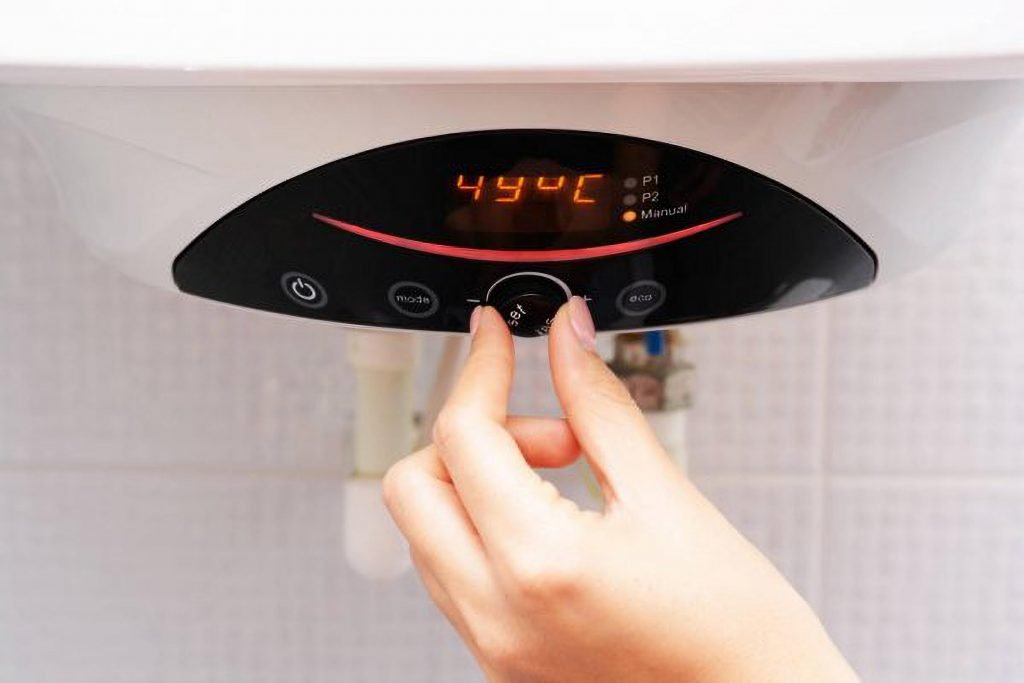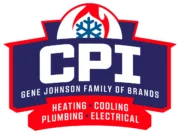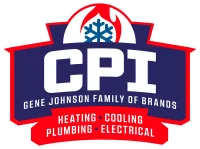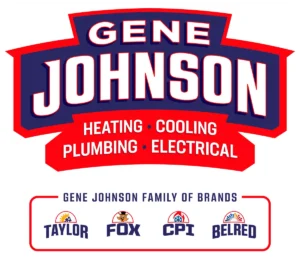What are the Most Common Water Heater Problems?
Water heaters, an essential household appliance, often fade into the background of our daily lives – that is, until something goes wrong. When a water heater starts acting up, it can range from a minor inconvenience to a significant disruption. Understanding the most common issues these appliances face can be the key to quick fixes and preventing future mishaps.
In this article, we dive into the myriad of problems that can plague your water heater, categorized for easy understanding and troubleshooting. Our aim is not just to highlight what can go wrong, but to provide a resource for recognizing the early signs of trouble, ensuring that your water heater continues to function as the unsung hero of household comfort.
Let’s unravel the mystery of common water heater woes, starting from temperature troubles to leaks, and exploring other frequent complications.

Water Heater Temperature Problems
A key aspect of a water heater’s functionality is its ability to consistently deliver water at the desired temperature. When this equilibrium is disturbed, it can result in feelings of unease and disruptions in daily life. In this section, we will explore common temperature-related issues that can arise in water heaters. These range from inconsistencies in water temperature to extended durations required to heat the water. Each of these problems not only affects your day-to-day comfort but also signals potential underlying issues that might need attention. Let’s delve into each of these temperature-related problems to understand their causes and possible solutions.
Inconsistent Water Temperature
If you’re finding that the water temperature in your shower or sinks fluctuates between hot and cold without reason, you’re likely dealing with inconsistent water temperature, a common issue in many households. This issue frequently arises due to a malfunctioning thermostat, which can struggle to accurately assess and control the water temperature. Another potential cause may involve a defective heating element, especially in electric water heaters. To address this, start by examining and adjusting the thermostat settings. If this doesn’t resolve the problem, it may be necessary to inspect the thermostat or heating elements. While some may feel comfortable attempting these adjustments, they can be complex and potentially risky. If the problem continues or if you’re uncertain about how to proceed, it’s prudent to seek professional help.
Water Too Hot
Experiencing water that’s consistently too hot, sometimes to the point of scalding, is usually an indication that the thermostat on your water heater is set higher than necessary. Alternatively, it could signify a malfunctioning thermostat not properly measuring the water temperature, leading it to overheat. The first step in rectifying this issue is to lower the thermostat setting, ideally to around 120°F (49°C) for safety and efficiency. If this adjustment doesn’t resolve the issue, it’s possible that the thermostat itself is faulty. Replacing a thermostat can be manageable for those familiar with handling water heater components safely, but if you’re not confident in doing this yourself, it’s always safer to contact a professional. They can confirm whether the thermostat needs replacement or if another issue is at play.
Water Too Cold
Encountering persistently cold water from your water heater is a clear sign of a malfunction. This could be a result of several factors, such as a defective heating element in electric water heaters or a compromised burner in gas models. Another less obvious cause could be the thermostat not functioning correctly, failing to signal the heater to warm the water adequately. To tackle this, a good starting point is verifying and adjusting the thermostat. However, if this adjustment doesn’t rectify the problem, it’s probable that the issue originates from a deeper malfunction within the heating mechanism. Due to the complexity and potential risks involved in handling these components, it’s advisable to seek professional assistance, especially if you’re inexperienced in water heater repair.
Long Reheat Times
Long reheat times in water heaters signify inefficiency in the system. This delay in heating may become especially noticeable in households with a significant demand for hot water. While sediment buildup is a common culprit, reducing the heater’s ability to transfer heat, other factors like an undersized unit or worn-out heating elements (in electric models) or gas burners (in gas models) can also contribute to this problem. A thorough inspection and cleaning to remove sediment buildup could be a starting point. However, if the issue is linked to the heater’s capacity or aging components, a professional evaluation is recommended to determine whether a repair or a unit upgrade is necessary.
Water Heater Leak Problems
Leakages in water heaters can range from being a simple fix to an indicator of a more significant underlying problem. In this section, we will address a variety of common leak-related issues that homeowners often encounter with their water heaters. These problems can manifest in different forms, from a minor drip to a significant leak, and can stem from various parts of the heater, such as connections, valves, or even the tank itself. Understanding the source and nature of these leaks is crucial for effective troubleshooting and repair. We’ll explore each of these leak issues in detail, providing insight into why they occur and how they can be rectified, ensuring the longevity and efficient operation of your water heater. Let’s navigate through these leak problems to help you maintain a leak-free and efficient water heating system in your home.
Loose Connections
Discovering a leak in your water heater can often lead to a simple solution, such as tightening loose connections. These leaks typically occur at the points where pipes connect to the water heater — either at the inlet (where cold water enters the tank) or the outlet (where hot water exits). Over time, these connections can become loose due to the regular expansion and contraction caused by temperature changes.
To tackle this issue, carefully inspect the connections for any indications of moisture or dripping. If you find any, try tightening them with a wrench. However, exercise caution not to over-tighten, as excessive force can potentially damage the connections. If the leak persists even after tightening, it might indicate a more serious issue, such as a crack or break in the piping, requiring professional intervention.
Drain Valve Leakage
Drain valve leakage is another common but generally minor issue. The drain valve, positioned at the base of the water heater tank, serves maintenance purposes such as sediment removal. Leaks in this area can typically be resolved by confirming the valve is fully closed. If the valve continues to leak even when fully closed, it may be damaged or worn out.
In these situations, replacing the valve is usually a simple task that homeowners with some DIY skills can tackle. Nevertheless, if you’re not confident in handling this repair or if replacing the valve doesn’t halt the leak, it’s recommended to contact a professional plumber. They can accurately diagnose whether the problem is with the valve itself or if there’s another underlying issue at play.
Temperature and Pressure Relief Valve Leaks
Dealing with leaks from the Temperature and Pressure Relief (T&P) Valve on your water heater can be a worrisome problem. This valve is designed to release water as a safety measure when the temperature or pressure inside the tank exceeds safe limits. When it starts leaking, it could be a sign of excessive pressure or overheating in the tank, or it might indicate that the valve itself is faulty.
To address this, first check if the pressure settings and the temperature on your water heater are too high and adjust them accordingly. If the leak persists even after these adjustments, it’s likely that the valve is malfunctioning and may need to be replaced. Replacing a T&P valve involves dealing with critical safety components of the water heater, so if you’re not experienced in this kind of work, it’s safest to call a professional.
Leaks from Nearby Plumbing Connections
Leaks from nearby plumbing connections can often be mistaken as a direct water heater issue, but they can significantly impact the system’s overall efficiency. These leaks might occur at the points where pipes connect to the water heater or along the plumbing lines close to the unit. They can be caused by loose fittings, corrosion, or wear and tear over time.
To troubleshoot, begin by examining all visible connections for tightness and indications of damage. Tightening loose fittings might solve the problem, but if you notice significant corrosion or damage to the pipes, it’s important to have a professional plumber address it. They can evaluate the extent of the damage and carry out the required repairs or replacements to guarantee your plumbing system is secure and free of leaks.
Bad Gaskets
Discovering a problem with bad gaskets in your water heater can lead to significant leakage issues. Gaskets, which provide a seal between various components of the water heater, can deteriorate over time due to regular wear or exposure to high temperatures. When these gaskets fail, water can start to seep through the compromised seals.
Identifying which gasket is faulty requires a careful inspection of the water heater, particularly around areas where different parts join together. Replacing a gasket is generally a straightforward task, but it does require a certain level of mechanical aptitude and familiarity with water heater components. If you’re not comfortable undertaking this task, it’s advisable to seek professional help to ensure a proper and safe repair.
Issues with the Dip Tube
Issues with the dip tube in a water heater can be a less obvious cause of functional problems. The dip tube’s role is to direct cold water to the tank’s bottom for heating. If it’s cracked or broken, cold water can mix with the hot water at the top of the tank, leading to inconsistent water temperatures and reduced efficiency.
Diagnosing a dip tube problem involves inspecting the tube, which may necessitate partially disassembling the water heater. This task can be challenging and may be best left to a professional. If the dip tube is indeed damaged, replacing it is essential to restore the water heater’s proper functioning.
Overheating Unit
When your water heater unit overheats, it can lead to serious leak issues. Overheating is often caused by malfunctioning thermostats or, in some cases, due to excessive sediment buildup which leads to overheating and increased pressure inside the tank. This excess pressure can force water to leak out of the temperature and pressure relief valve or other weak points in the system.
If you notice your water heater overheating, it’s important to turn it off and check the pressure relief valve and thermostat. However, due to the risks involved, including potential burns or pressure-related accidents, consulting a professional for a safe and thorough resolution is advisable.
Internal Tank Leakage and Corrosion at the Anode Rod
Leaks due to internal tank leakage and corrosion, particularly around the anode rod, are significant. The anode rod is essential for preventing rust inside the tank, but over time it corrodes, diminishing its effectiveness. This corrosion can result in small cracks or holes in the tank, leading to leaks.
Regularly checking and replacing the anode rod can prevent such issues, but once the tank starts leaking, it’s usually a sign that the water heater needs to be replaced. Dealing with tank corrosion and leaks can be complex and hazardous, so professional assessment and intervention are recommended.
Cracked Storage Tank
A cracked storage tank is a critical issue that invariably results in leaks. These cracks often develop from internal corrosion, constant heating and cooling cycles, and can lead to significant water damage.
Unfortunately, a cracked tank cannot be repaired effectively and typically requires the replacement of the entire water heater. It’s essential to deal with this issue promptly by turning off the unit and seeking professional assistance. Delaying this can lead to more extensive damage and potential safety hazards.
Additional Common Water Heater Problems
Water heaters face a range of issues beyond just temperature fluctuations and leaks. This section is dedicated to those additional, yet common, problems that can impact the efficiency and operation of your water heater. From sediment buildup affecting performance, to specific mechanical issues in gas and electric models, these concerns, while less obvious, are equally crucial to the overall health of your water heater. Understanding and addressing these problems is vital to ensuring the efficient functioning of your water heating system. Let’s examine these issues more closely to help maintain your water heater’s top condition.
Sediment Buildup
Over time, minerals from water settle at the bottom of your heater, reducing efficiency and leading to problems like insufficient heating and overheating. Regularly flushing your tank can help remove these sediments.
Pilot Light Issues (Gas)
If the pilot light on your gas heater frequently goes out or won’t stay lit, it could indicate a faulty thermocouple or a clogged pilot orifice. It’s often advisable to seek professional assistance, particularly when dealing with gas components.
Electric Element Failure (Electric)
When electric heaters fail to heat water adequately, it might be due to burned-out heating elements. Replacing these elements can solve the problem but should be done carefully and by someone with electrical expertise.
Excessive Noise
Rumbling or popping sounds are typically caused by sediment interacting with the heating element. Regular maintenance, like flushing the tank, can often mitigate these noises.
Rusty or Discolored Water
This is usually a sign of corrosion inside your tank or pipes, indicating a need for potential replacement or professional evaluation to prevent leaks.
Smelly Water
Often caused by bacteria in the tank, this issue can be addressed by flushing the tank and increasing the water temperature temporarily to kill the bacteria.
Faulty Pressure Relief Valve
A valve that leaks or doesn’t open at high pressures poses a safety risk. It’s important to test and, if necessary, replace this valve, preferably with professional help.
Circuit Breaker Tripping (Electric)
If your heater frequently trips the circuit breaker, it indicates an electrical problem, such as a short circuit. Professional inspection is necessary to avoid safety hazards.
Gas Valve Problems (Gas)
Difficulties with the gas valve can impede the heater’s performance. Since it involves gas-related components, it’s advisable to leave repairs to qualified technicians.
Frequently Asked Questions (FAQ)
Q: What is the average operational lifespan of a typical water heater?
A: The lifespan of a water heater generally ranges from 8 to 12 years, though it can vary based on factors such as maintenance, usage, and water quality.
Q: What typically causes a water heater to malfunction?
A: Common causes of water heater malfunctions include sediment buildup, faulty heating elements or thermostats, corroded anode rods, and excessive water pressure. Regular maintenance can help prevent many of these issues.
Q: What are the signs indicating my water heater might be failing?
A: Signs of a failing water heater include inconsistent water temperatures, unusual noises, water discoloration, leaks, and a notable drop in heating efficiency.
Q: What could lead to the cessation of my water heater’s operation?
A: Complete cessation of a water heater’s operation can be caused by a failed heating element, a malfunctioning thermostat, a tripped circuit breaker (in electric heaters), or gas supply issues (in gas heaters).
Q: Are there any factors that can reduce the lifespan of a water heater?
A: Factors that can shorten a water heater’s lifespan include lack of regular maintenance, hard water (which leads to more sediment buildup), high water pressure, and frequent or heavy usage.
Q: How often should a water heater be serviced for optimal performance?
A: It’s advisable to schedule an annual water heater service, which typically involves flushing the tank to remove sediment, inspecting the anode rod, and checking the heating elements and thermostats.
Q: Can environmental conditions affect the efficiency and functioning of my water heater?
A: Yes, environmental conditions like very cold incoming water temperatures, high humidity, and corrosive air (for instance, in coastal areas) can affect the efficiency and durability of a water heater, potentially leading to more frequent maintenance needs or reduced lifespan.
Navigating Common Water Heater Challenges with CPI Plumbing & Heating
As our exploration of the most common water heater problems draws to a close, it’s clear that both proactive maintenance and skilled intervention are vital for smooth and efficient operation. While understanding these issues can be complex, with CPI Plumbing & Heating’s expertise, managing them becomes effortless.
Our team at CPI Plumbing & Heating is adept in handling the intricacies of water heater systems. We pride ourselves on our comprehensive understanding of these crucial home appliances and our unwavering commitment to exceptional customer service.
Whether your water heater needs a routine check-up, a complex repair, or even a complete replacement, our skilled professionals are prepared to provide the necessary expertise. With a focus on tailored solutions, we aim to address your specific water heater challenges, ensuring your system runs smoothly and contributes effectively to your home’s overall comfort. Trust us to bring balance and efficiency to your water heater’s performance.
For top-notch water heater services and more, connect with CPI Plumbing & Heating at (360) 822-9306 – your partner in maintaining home comfort and efficiency.


